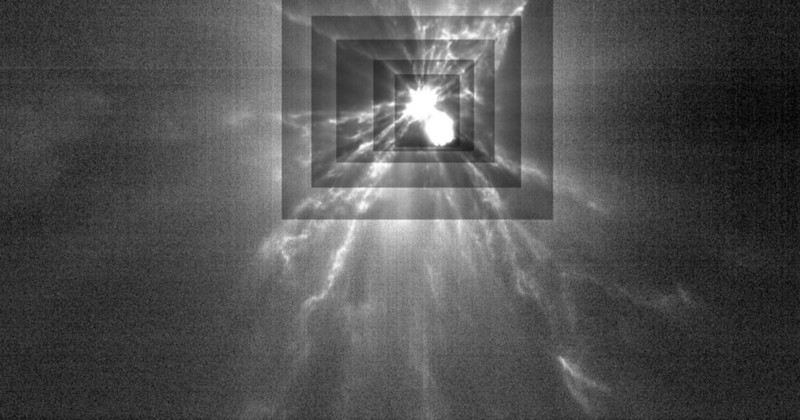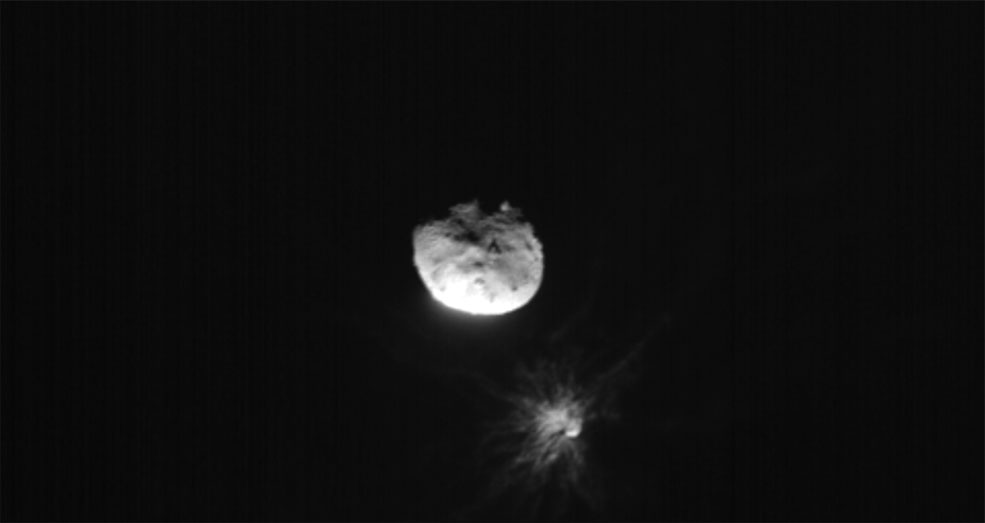NASA’s DART Test Successfully Altered Asteroid’s Path

NASA says its Double Asteroid Redirection Test (DART) successfully altered an asteroid’s orbit, proving that planet Earth can defend itself against an incoming meteor.
The mission marks the first time humans have purposely changed the motion of a celestial object, in this case, the near-Earth asteroid Dimorphos.
“All of us have a responsibility to protect our home planet. After all, it’s the only one we have,” says NASA Administrator Bill Nelson.
“This mission shows that NASA is trying to be ready for whatever the universe throws at us. NASA has proven we are serious as a defender of the planet. This is a watershed moment for planetary defense and all of humanity, demonstrating commitment from NASA’s exceptional team and partners from around the world.”
Measuring Success
Dimorphos orbits a larger asteroid called Didymos. Prior to the impact, Dimorphos took 11 hours and 55 minutes to orbit Didymos. NASA’s investigation team confirmed that the collision has altered the Dimorphos’ orbit time by 32 minutes, shortening it to 11 hours and 23 minutes.
Before the mission, NASA said that an orbit time change of 73 seconds or more would be considered a success. The data shows that DART has surpassed this benchmark by more than 25 times.
“This result is one important step toward understanding the full effect of DART’s impact with its target asteroid,” says Lori Glaze, director of NASA’s Planetary Science Division at NASA Headquarters in Washington.
“As new data come in each day, astronomers will be able to better assess whether, and how, a mission like DART could be used in the future to help protect Earth from a collision with an asteroid if we ever discover one headed our way.”

It is thought that if a menacing asteroid was heading Earth’s way then it would need to be targeted years in advance.
“Warning time is really key here in order to enable this sort of asteroid deflection to be used in the future as part of a much larger planetary defense strategy,” comments Dr. Nancy Chabot from the Johns Hopkins University Applied Physics Laboratory, which led the mission for NASA.